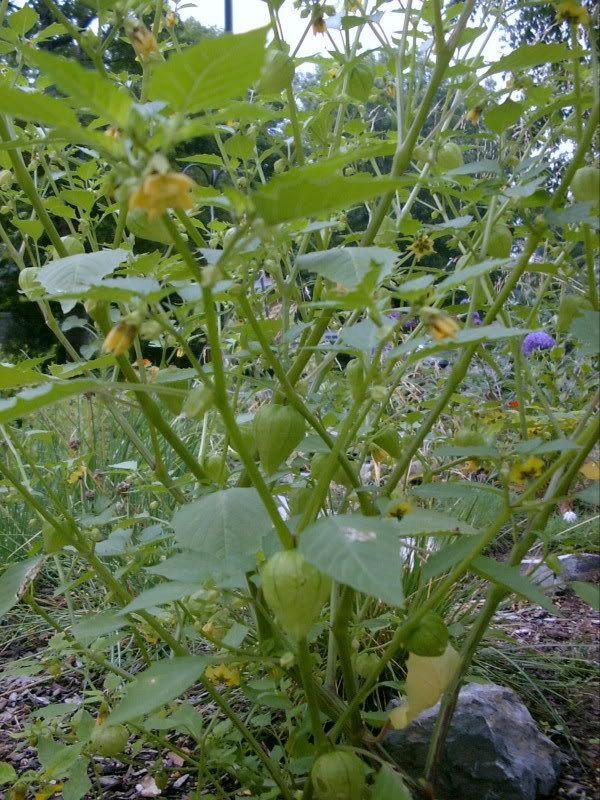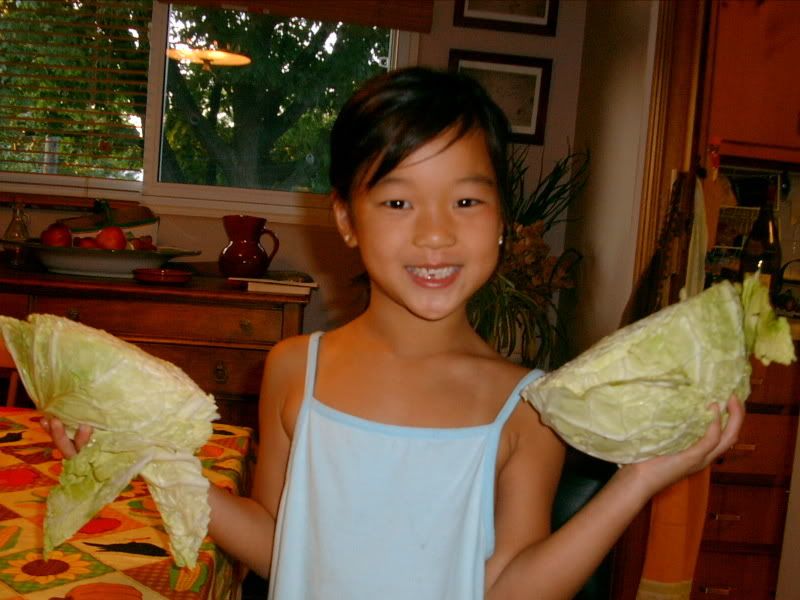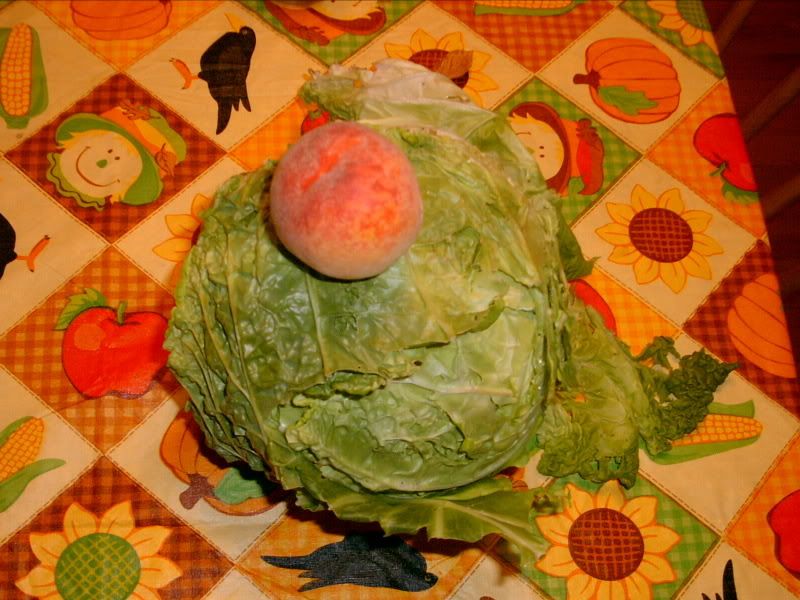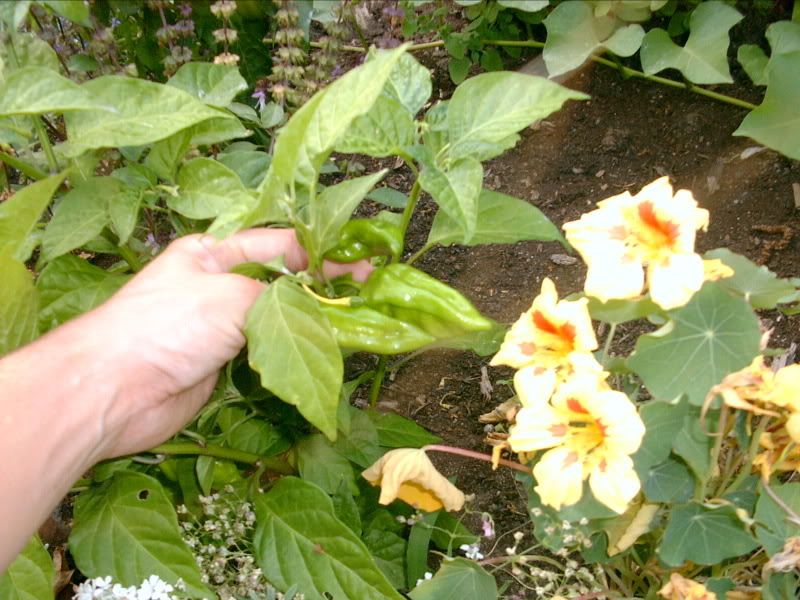The tomato has other family members rarely mentioned in dinner table conversation.
Let me introduce you to some of them:

Tomatillo plant
This is the tomatillo. Best known as an ingredient in salsa verde. Used thus, it is wonderful but I also like to eat them out of hand when the husks turn yellow. They have a fleshy fruity taste with an edge of tartness that is difficult to describe. The green tomatillo, in my garden, doesn't need supplemental watering and grows in an open but sprawling habit.
Ground cherries are also grow in a papery packaging. They are delicious little berries used fresh, in perserves or even pies. I grew Aunt Molly's Ground Cherry this year and found that it was an extremely prostrate plant, one could even describe it as a ground cover. The yellow berries are eaten when completely ripe. This is when they turn bright yellow and fall off the plant. You can store them in their husks for a perid of time (the amount differs depending on what you read) but let's say a couple weeks.
Lastly, we have sunberries (not garden huckleberries). Perhaps the most contraversial family member. Why did I specify that they were not garden huckleberries? I suspect that would require an entire post to explain but in short:
Luther Burbank bred the sunberry in the early 1900s but critics charged him with re-introducing the garden huckleberry. I don't have experience with the latter but understand that it is only palatable after lots of sugar has been added. However, sunberries are very tasty eaten right off the plant. Here's my problem with them. Everyone warns you to only eat the ripe berries. The unripe ones and all other parts of the plant are poisonness (you shouldn't eat potato fruit or tomato leaves or... this family only gives certain parts up for consumption). Well, I have two small children who routinely eat green tomatoes and strawberries so shouting at them every time they are near the sunberry patch to only eat the purple ones is a bit exhausting. My youngest did eat a couple green ones and seemed completely unaffected by the way.
Also they are a bit time consuming to harvest because but no more so than blueberries. On the plus side, they are early and productive. Oh and they taste great in apple crumble.
Links
How to make ground cherry pie
Mapple Farms, my supplier of sunberry and tomatillo, as well as rare tubers including short season sweet potato.

Join
Gardeners, Plant and Nature lovers can join in every Sunday, visit As the Garden Grows for more information.



